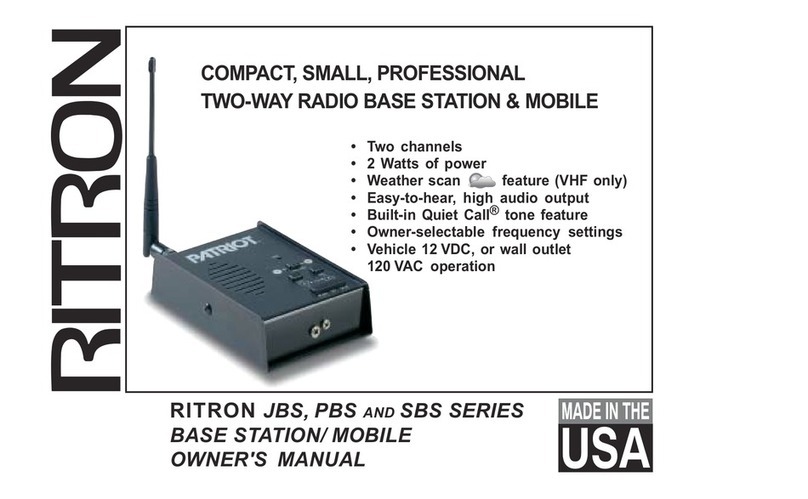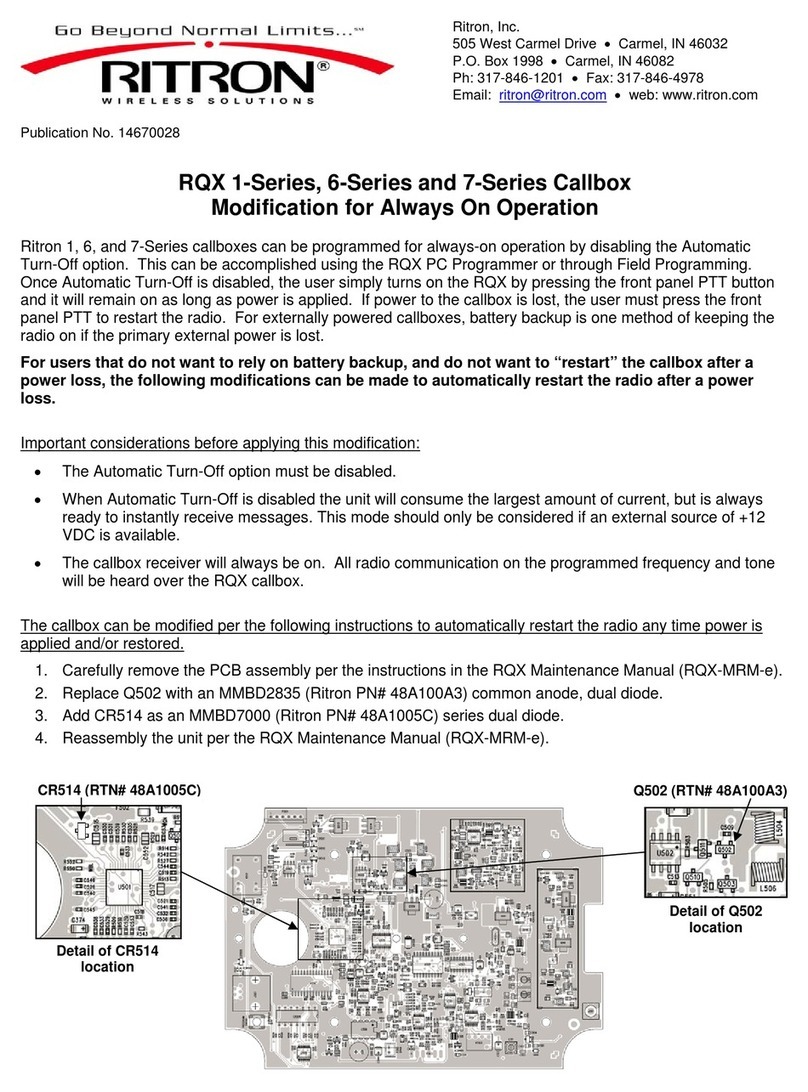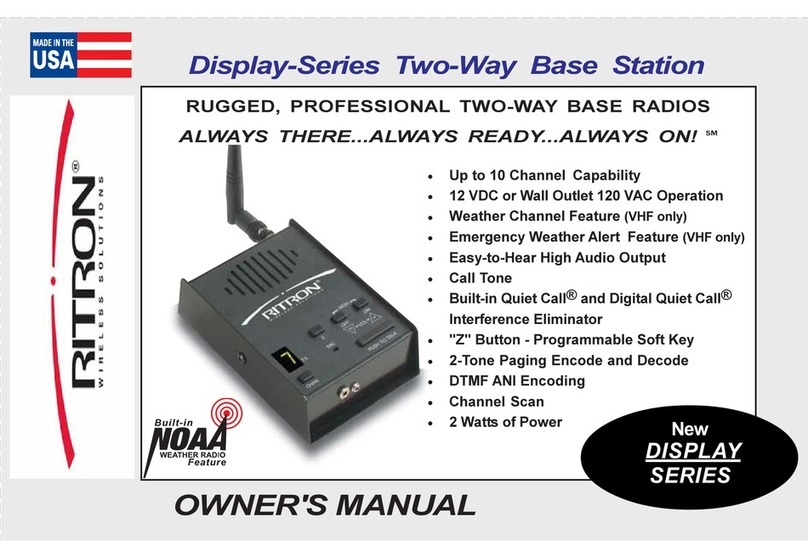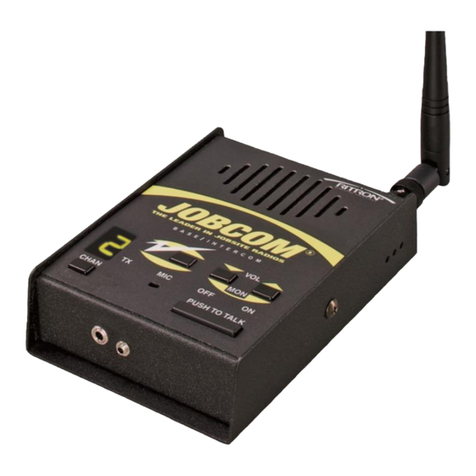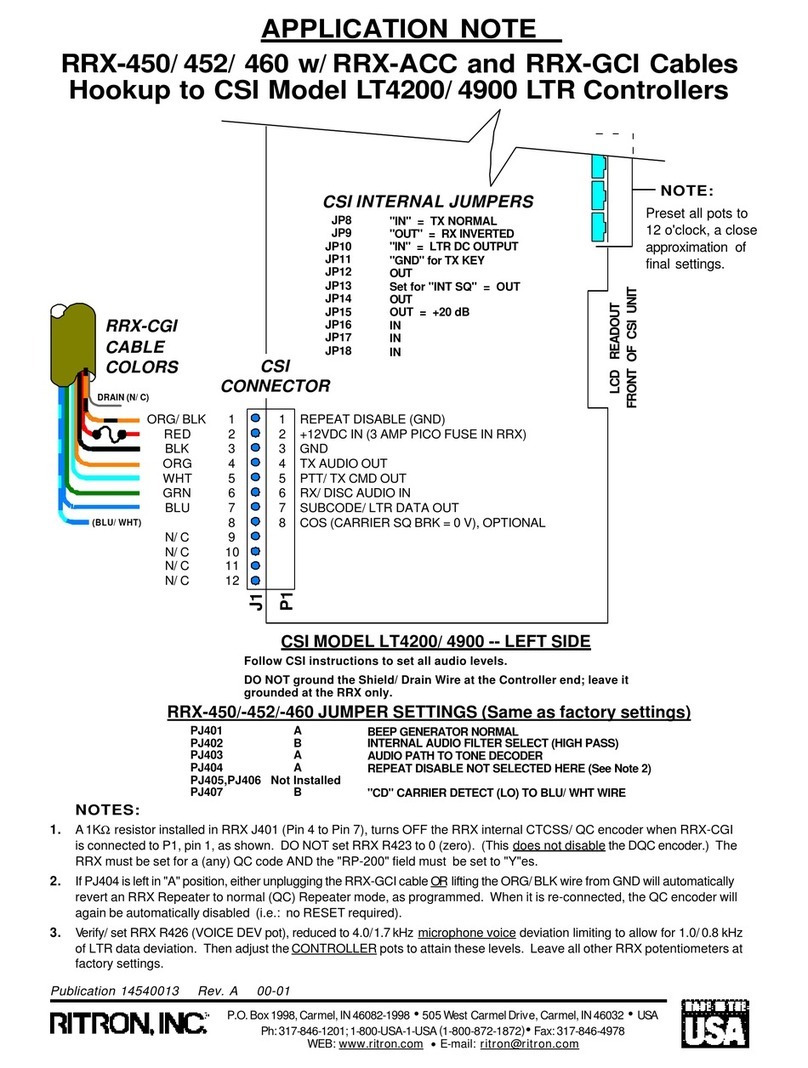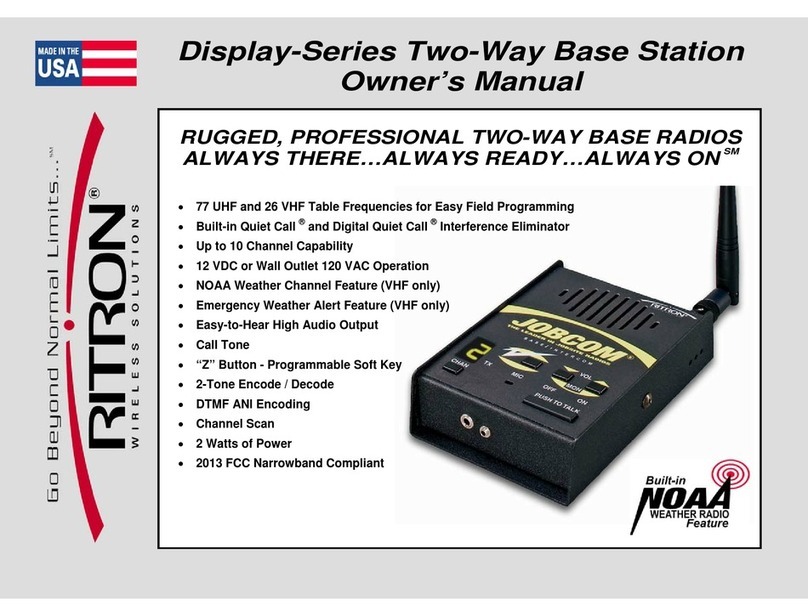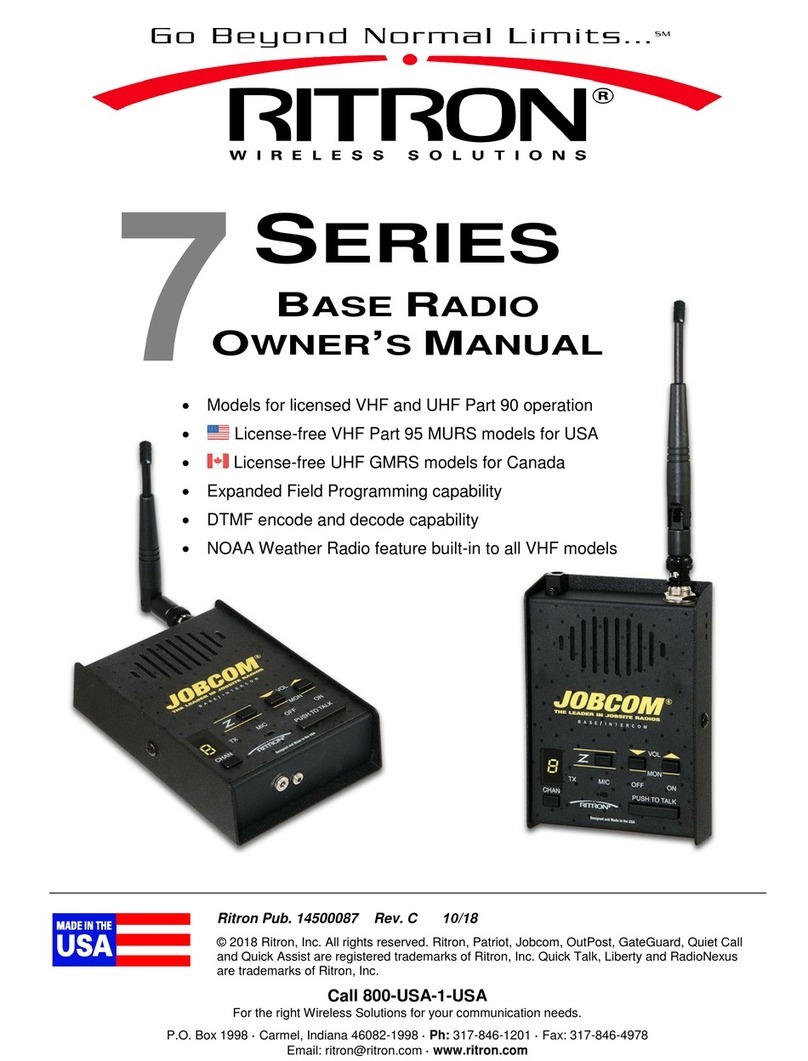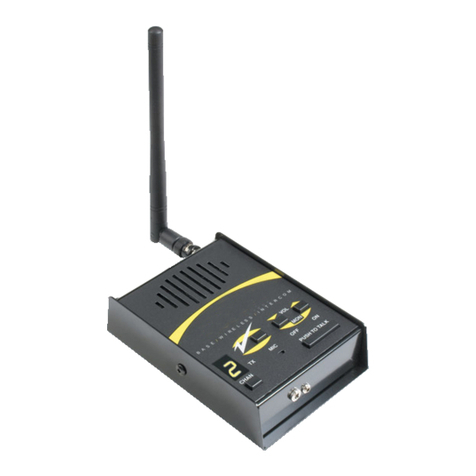
Quick TalkTM vS
RVS-P1 RITRON VEHICLE SENSOR PROBE
INSTALLATION / OPERATION INSTRUCTIONS
Introduction
Please read these instructions completely. It is recommended that each system be bench tested prior to installation
and that the installer acquaint himself with the Quick Talk vS system. The sensor probe detects the disturbance to
the Earths magnetic field caused by moving ferrous metal such as steel or iron. The larger the ferrous object and
the faster the movement the further away it will be detected.This system includes the relay board installed inside the
Quick Talk enclosure and the vehicle sensor probe.If there are any questions technical support is available to
discuss problems and offer solutions.
Earth Ground
A proper earth ground of the probe is essential for the systems lightning protection and EMF shielding. Normally
burying the vehicle sensor probe is sufficient to meet the grounding requirements.
However under three conditions the probe must be grounded by attaching it to a separate ground rod: 1) in areas
with a poor earth ground;such as sandy gravel or rocky soil; 2) when the probe is inserted in a PVC pipe; or 3) the
probe is mounted above ground.
To ground the probe drive an 8 ft copper or copper-clad ground rod completely into the ground (DO NOT USE A
GALVANIZED GROUND ROD). Solder and clamp the grounding strap/braid coming out of the vehicle sensor probe
to the ground rod. For a proper solder connection the ground rod must be sanded fluxed and heated with a torch
until the solder melts onto the rod itself.
NOTE: Extra wire may be added to the grounding strap if needed (e.g., if the vehicle sensor
probe is located deep inside a VC pipe).
Location of the Vehicle Sensor robe
The sensing range of a probe buried beside the driveway is 5 to 8 ft with a small car going 5 MPH. Taking the width
of the car and the sensing range this system can cover a 12 ft driveway. Buried in the center of the driveway the
system can cover a 24 ft wide driveway...refer to Probe and Cable Installation.
The probe should be at least 35 ft back from a street on which traffic is going under 35 MPH and at least 50 ft back
from a street on which traffic is going over 35 MPH. If the probe is installed in the center of a 12 ft driveway it can be
20 or 35 ft back from traffic respectively. This is made possible by adjusting the probes GAIN sensitivity...refer to
Adjusting Probe Sensitivity.
Stationary ferrous metal near the probe will not hinder its operation. If the probe is used near a moving ferrous metal
object such as a gate surface tests should be conducted to insure that the object does not accidentally trigger the
probe. The probe can be placed into a PVC pipe under an open steel reinforced grid of a concrete roadway without
hindering its operation. The probe will not work under a solid piece of steel.
Cautions
DO NOT bury the gray enclosure containing the Quick Talk transmitter electronics.
DO NOT bury the probe within 6 to10 feet of a buried power or telephone line.
DO NOT bury the probe within 6 to 10 feet of a buried invisible dog fence.
DO NOT bury the probe within 10 feet of a natural gas line.
DO NOT bury the probe within 20 feet of a power pole with a transformer.
DO NOT bury the probe within 100 feet of railroad traffic.
DO NOT bury the probe within 200 feet of sub-station type overhead power lines.
DO NOT mount the probe vertically when used for above-ground applications
.
WIRELESS VEHICLE DETECTION SYSTEM
1
If the Quick Talk transmitter enclosure is mounted outdoors you must seal the
antenna connection on the radio. Refer to the instructions in the Quick Talk
manual page #13. Use Archer Connector Sealant Radio Shack #278-1645 or
equivalent.
robe and Cable Installation
Installation tip: Installation of the probe relative to the flow of traffic in the target area is critical. Since one end of the
probe has a positive signal and the other end has a negative signal if both ends are activated at the same time they
will cancel each other out and the probe will not detect a vehicle in the target area. Therefore avoid installing the
probe where both ends will be activated at the same time; e.g. in a vertical position above ground or perpendicular
relative to the flow of traffic in the target area.

